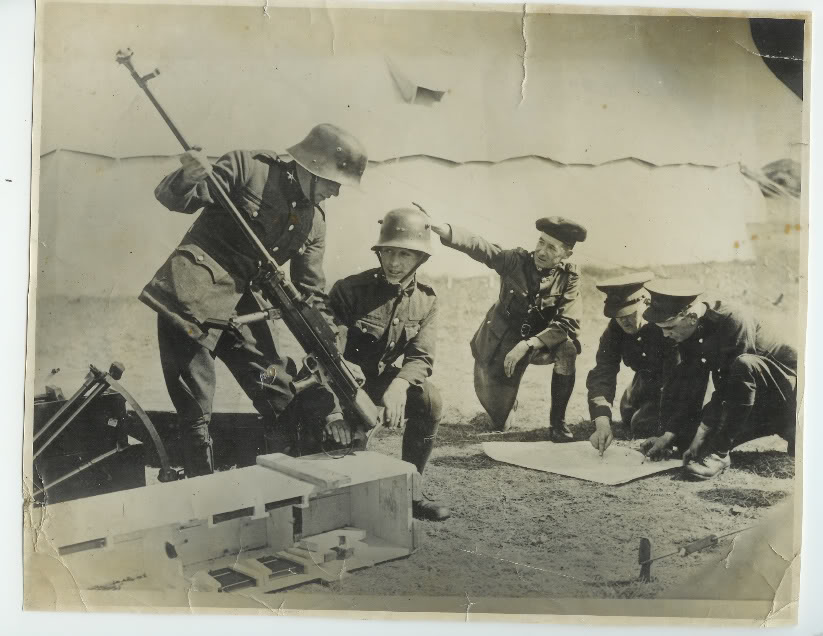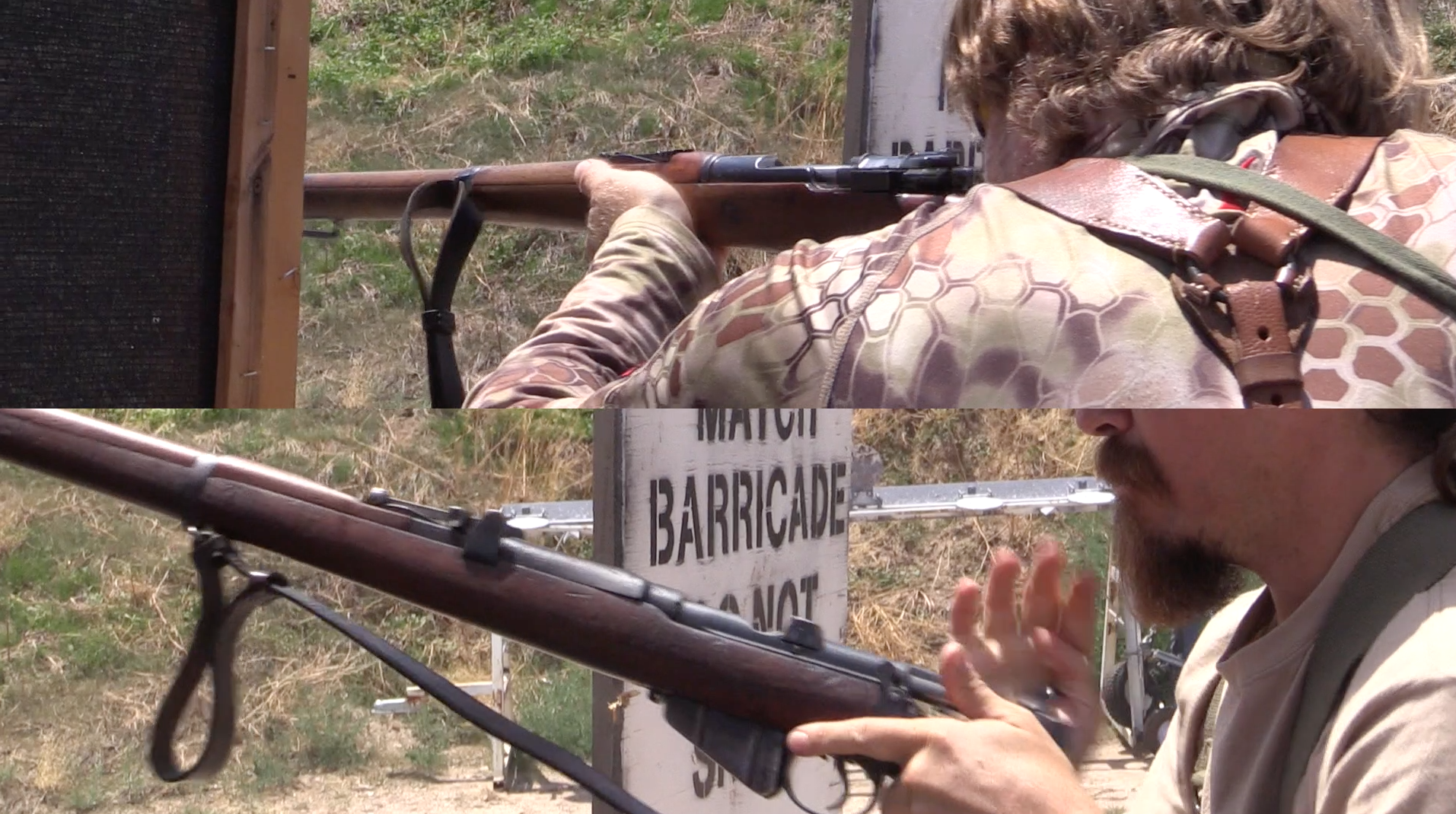I ordered a copy of Damien Lewis’ book on the exploits of British SOE in WWII expecting to find an overview of, well, what SOE had done during the war. That’s not quite what this book is. Instead, Lewis has given us essentially a first-person view of SOE’s work through the eyes of Danish commando Anders Lassen (VC, MC with two bars). Don’t be fooled by the cover image; the North African LRDG is never mentioned. However, what Lassen was involved in was equally impressive and probably less well known.
Lassen was part of the crew for the first real SOE operation, the theft of a pair of German and Italian supply ships from the neutral Spanish port at Fernando Po. In an exploit that could be straight out of Hollywood, a band of commandoes sailed a pair of tugboats into the harbor at night while the ships’ officers were ashore at a raucous party. They blew the anchor chains with explosive charges, locked the crews below deck, and sailed the ships out to sea where they could be legally captured by a British destroyer. And they did it without a single death on either side.
The exploits only became bigger and bolder after that, with Lassen and his comrades making regular raids across the English Channel and running a freewheeling campaign of both hit-and-run raids and occupation of Greek islands in the Aegean. These were the quintessential independent Special Forces fighters, operating outside regular military command structures and supply chains, fighting as they saw fit. Lassen eventually because the commanding officer of a large group, and by the end of the war had been awarded the Military Cross three times. His last operation in Italy – where his men were hit with a shattering defeat when pushed into the role of spearheading a conventional offensive – would result in him posthumously receiving the Victoria Cross for his heroism.
I ended up reading the book almost entirely in a single sitting, and found it riveting and fascinating – far more so than the typical academic history. It offers a humbling and motivating example of what men can do when they are skilled and motivated. At the same time, it also left me a bit melancholy, as by the end we can see Lassen consumed by his combat experiences and slowly becoming removed from society. Nobody can say how Lassen would have coped had he survived the war, but one suspects he would have led a troubled life. Perhaps that is the price one must pay to become, as Churchill described, “a hand of steel which plucks the German sentries from their posts with growing efficiency.”




If you are interested in reading about the SAS, Ben Macintyre’s SAS Rogue Heroes is a great read, full of detail. He’s also written books like Operation Mincemeat, about the dead spy the Brits cast into the waters before D Day to convince the Germans the invasion would be elsewhere than Normandy, and A Spy Among Friends, a telling of the Kim Philby story.
There’s also the similarly titled Churchill’s Ministry of Ungentlemanly Warfare by Giles Milton, which provides a wider view of the SOE and its training, characters and missions.
“Anders Lassen (VC, MC with two bars)”
After reading, this reminded me about V.N.Leonov, Hero of Soviet Union, Hero of Soviet Union: https://en.wikipedia.org/wiki/Viktor_Leonov
However he survived war and wrote books, at least one can be found in English: Blood on the Shores: Soviet Naval Commandos in World War II
I read about SAS operations group many years ago – was probably still in teen years. It may not have been exactly factual account, I cannot tell; central hero was capt. Stirling. They conducted nearly free of obstruction raids on German positions thru North Africa; it was captivating reading. That was then.
Now, when you look at reality of mid-eastern battlefields of these days, it is not far apart – also, small groupings moving and striking throughout vast desert-like landscape. You may think that this is a way of future warfare conduct. It could be, if…. there were not spy satellites and finally – precision, remotely fired munitions. Those who are in possession of these assets are in great advantage and will call the shots.
“reality of mid-eastern battlefields of these days”
I have rather small knowledge about current local conflict there, but I think that situation in this environment might evolve into somewhat similar to that of Age Of Sail, just with fleets-on-wheels, consisting of various military (often older patterns) and home-made one, like so-called technicals:
https://en.wikipedia.org/wiki/Technical_(vehicle)
(nomen est omen often using Toyota Land Cruiser)
With convoys transporting any cargo, deemed valuable enough, on behalf of various crime-like kingpins or warlords. What cargo? Such which might be sold with profit, so it depend on place, food, medicaments, fuel, ammunition and opium (or any similar substance trendy in given area).
is: “(…)various military (often older patterns) and home-made one(…)”
should be: “(…)various military (often older patterns) and home-made vehicles(…)”
I have watched number of videos and commentaries namely on use of small arms and support weapons in the areas of conflict. Generally I’d say that assault rifles are used as means of mopping up resistance/ suppressive fire while larger calibers support weapons play the key role in defeating strongpoints of resistance. Also, very important role have sniper weapons (in ruins of residential areas) and skills of their uses.
Very relevant post Denny. And yes, you are quite correct – intelligence, communications, and logistics are what win wars today, on a strategic (and to a lesser extent tactical) level.
I would like to point out in addition that while spy satellites, high grade interception and decryption of your enemy’s communications, and precision, guided munitions are absolutely the face of the modern battlefield, there is a secondary reality that doesn’t make the headlines:
Most of the world doesn’t have them.
We tend to assume, here in the west, that our enemies will be as well equipped and supplied as we are. We tend to assume – and perhaps have to, given some whoppers of failings in the intelligence department, in recent memory – that our enemies know as much or more that we do. They generally don’t, unless we drop the ball.
For every tomahawk missile that makes it’s way within a foot of it’s target, after flying over half a continent, there are millions (yes, millions) of small arms rounds being sprayed over the landscape by people who don’t know anything about the battlefield (and probably don’t need to know) if it is more than 200 yards away.
CG
Be it Tomahawk or Kalibr, there are three similarly equipped parties in Syria while Iran is aspiring and close: U.S., R.F. and Israel. So far two of them conducted strikes; with variable degree of success. And yes, reconnaissance is the key. Here is one such example from recent days:
https://www.rt.com/news/404365-us-special-forces-isis/
What I anticipate as next move in technology development is a sophisticated camouflage such as artificial mirage produced by electronic means (mind you, electronic black-out is already possible).
With all that fancy technologies, it should be remembered that human spies are still viable way of gathering data.
Anyway, I would say that complete screening against all possible detectors is close to impossible, but effective defense against one method of detection. I would say that easier would be creating fake targets, modern equivalents to World War II-era Sherman Inflatable tanks:
http://www.ghostarmy.org/bio/Equipment/418/
obviously, in modern era, fake tanks would need to be more advance and beyond copying visual appearance needs at least heat sources placed inside to deceive heat-seekers.
The problem with spysats is that half the time, they’re never around (in their orbit tracks) when you need them. That works for you if you’re what they’re looking for. It has made them much less useful in the present conflict than their designers and operators thought they would be.
It’s not a coincidence that the U.S. Air Force, the world’s single biggest “owner/operator” of reconsats, now has Lockheed and Northrop/Grumman developing a new generation of strategic and tactical recon aircraft, both manned and unmanned. In other words, successors to the SR-71 and U-2.
Generally, putting a reconnaissance jet in the air and over a target area Right The(Bleep)Now will always be easier and faster than using a satellite for the same job. Orbital mechanics and the complexity of launching things straight up in the air atop big metal tubes full of highly-volatile chemicals are not your friends in such circumstances.
cheers
eon
“The problem with spysats is that half the time, they’re never around (in their orbit tracks) when you need them. That works for you if you’re what they’re looking for. It has made them much less useful in the present conflict than their designers and operators thought they would be”
All that said, original aim for such machines should be given – detection of construction sites of new atomic bunkers or long-range rocket silos (launchpads).
Such structures, obviously, were hidden from “flying eyes” when finished, however masking construction site, which requires a lot of heavy equipment and movement of big volume of clay was much harder. For observation of such activates, which are fixed in position and take months to finish, taking one photo per 24 h is totally enough. With disclaimer that having photo and understanding photo (what is shown) are 2 different things.
Every system has its limitations, be it methods of reconnaissance (satellites, planes) or weapon systems using their data. This article in Veteran’s Today (G. Duff)claims that significant number of tomahawks used against Syrian airfield were disabled with use of electronic warfare.
https://www.veteranstoday.com/2017/04/09/trump-humilated-syria-shoots-down-34-of-59-cruise-missiles-russia-to-upgrade-system-soon/
Same information appeared in different sources. Interestingly, there were no more tomahawks used in Syria afterwards.
I do not side with political hyperbole of this article; my focus is on the technical essence, however it appears there are means how to deal with (relatively) new technology and are constantly improving. It comes down to reality if your precision guide ammunitions can be jammed or not.
“Same information appeared in different sources. Interestingly, there were no more tomahawks used in Syria afterwards.”
For obvious reason data about current usage of weapons are classified.
It might be electronic warfare, but what if this weapon has some flaw? And it missed target without external “help”? That would raise question why flawed weapon was allowed to enter operational service? And more importantly who is responsible for that?
“tomahawks used against Syrian airfield were disabled with use of electronic warfare”
That discussion of various missiles reminded me about one project, Т-15
https://ru.wikipedia.org/wiki/Т-15_(проект)
developed in Soviet Union in 1940s-1950s. First idea called for nuclear-warhead carrying nuclear-powered torpedo, later due to technical limitations electric propulsion was chosen instead. Original plan called for 100 megaton nuclear warhead, it was supposed to be deployed from project 627 class submarine (November-class in NATO parlance) and was supposed to strike enemy ports, creating massive water wave damaging anchored vessels.
For various reasons it was abandoned, Soviet Navy high commanders were opposing it as it could kill and wound civilians nearby attacked port, but more importantly Soviet technology don’t allow construction of small enough 100 megaton warhead (torpedo dimensions were as follow: length 24 m, diameter 1,5 m, mass of ready torpedo 40 tons – however propulsion needed big volume) and also there were doubts about ability to safely fire such weapon from relatively small submarine.
Have you read Eastern Approaches by Fitzroy Maclean? It’s well worth a read. As is Operation Bullbasket by Paul McCue and The Nazi Hunters again by Damian Lewis.
I have just ordered the book, thanks Ian.
Regards, Simon
The Victoria Cross in itself has many daunting tales in its history. I recommend watching Jeremy Clarkson’s BBC documentary (easy to find on Youtube), the incredible bravery of the recipients will bring moistness to ever the most jingoistic American’s eye.
The SOE was different from the SAS, SBS, LRDG, Popski’s Private Army, and the other military organizations. The SOE was an intelligence organization specializing in spying, subversion, assassination, etc. The military organizations did reconnaissance, raids, etc.
An SOE operative who was captured could be shot as a spy, while the military organizations operated in uniform and if captured would be POWs. I recall reading that David Sterling (the founder of the SAS) was very particular about ensuring that there was a clear distinction between the SOE and SAS.
The picture on the cover of the book is a famous one of the SAS. Sterling is in the foreground, and Paddy Mayne is beside him.
The LRDG specialized in reconnaissance, doing things such as going behind enemy lines to track and report on enemy troop and logistics movements (very critical when attempting to predict what the Germans would do next). They were the ones who trained the SAS on how to navigate and travel across the open North African desert after the SAS’s initial disastrous attempt at parachuting behind German lines. What was to became the LRDG started working on this problem before the war, so these skills weren’t something that was conjured up out of thin air.
If you’re interested in the sort of thing that the SOE got up to, Operation Anthropoid is a good example. There was a movie released about it last year. There’s a trailer on Youtube which gives a good flavour of it.
Actually, there is an LRDG tie-in. I spent today day reading “The Long Range Desert Group in World War II”, and the name Anders Lasserang a bell. He is mentioned in chapter 16, when he leads a bridge demo raid in Croatia that was guided to the target by an LRDG team. (The search function in Kindle books is great)
All war involves involuntary death, there’s a limit to how “gentlemanly” you can be accordingly.
This is a really good tip especially to those fresh to the blogosphere.
Brief but very precise information… Appreciate your sharing this
one. A must read article!
I think this is one of the such a lot vital information for me.
And i’m satisfied studying your article. However should remark on some normal
issues, The web site taste is great, the articles is actually nice : D.
Good activity, cheers